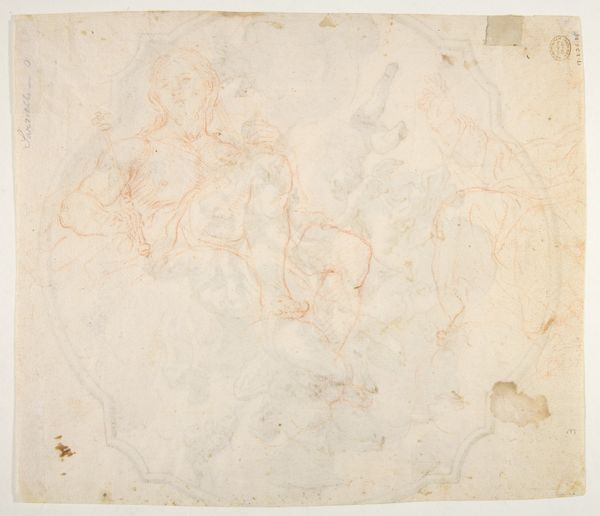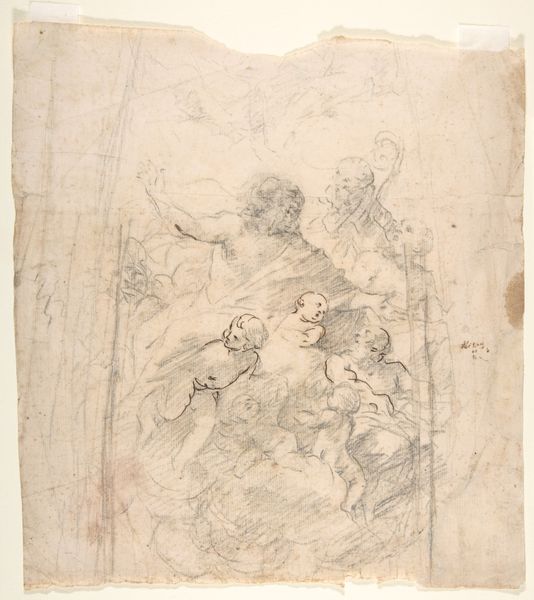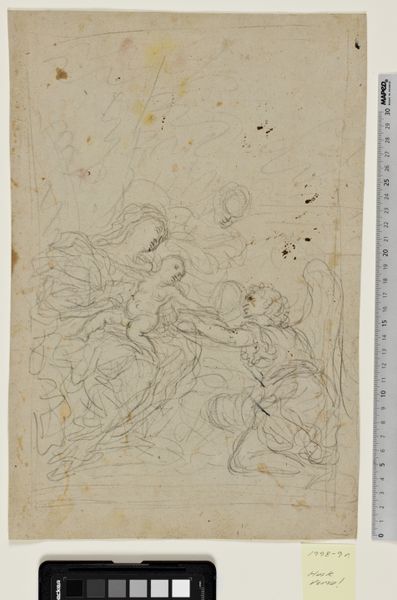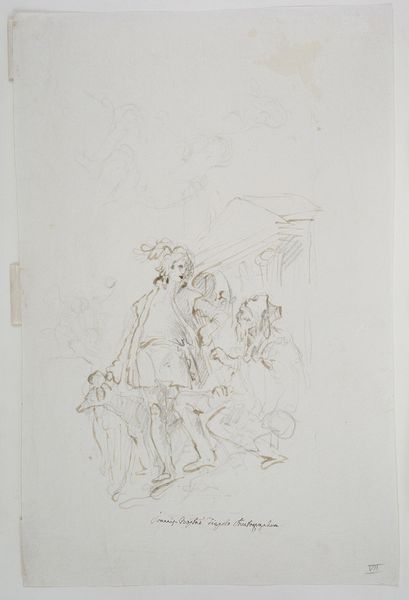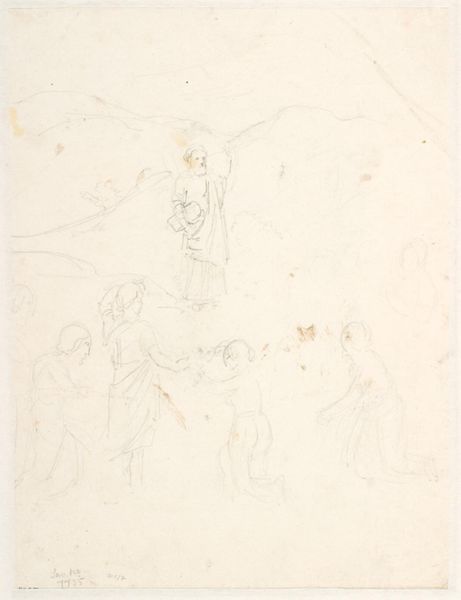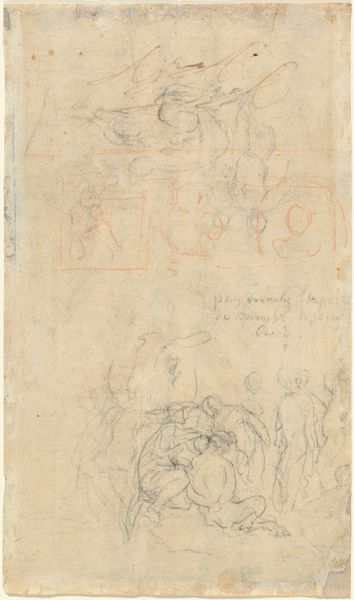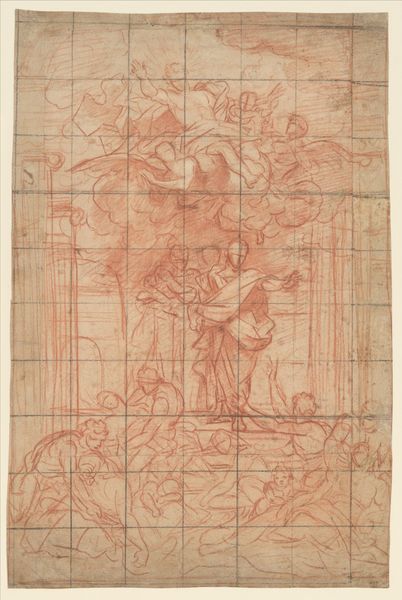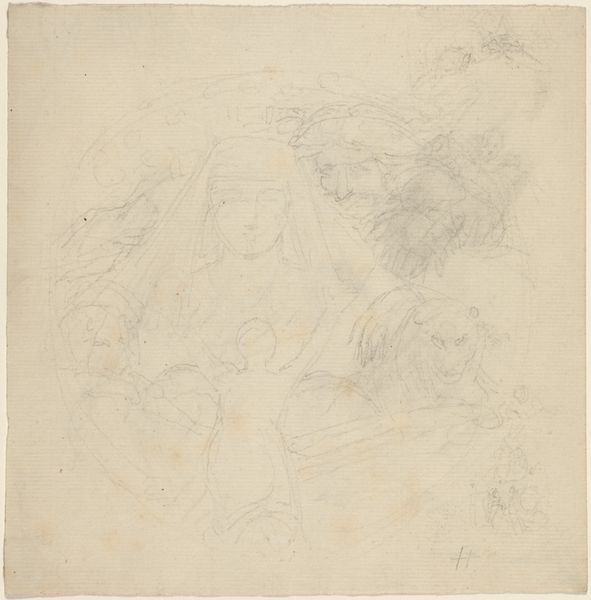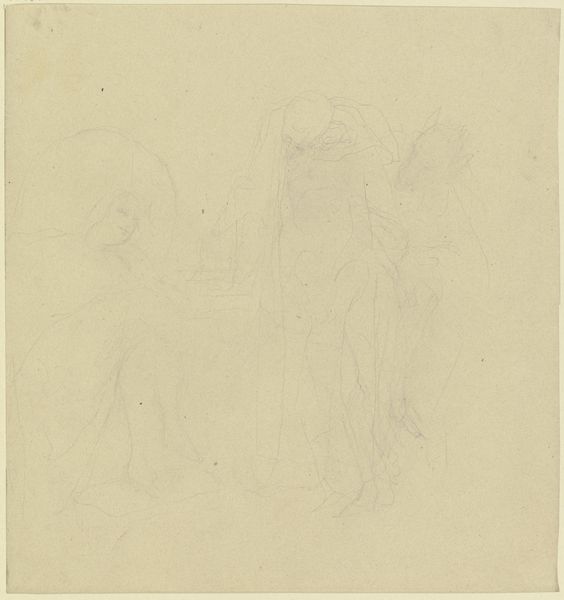
A sketch for an altarpiece with six saints 1600 - 1610
0:00
0:00
drawing
#
drawing
#
figuration
#
history-painting
#
academic-art
#
italian-renaissance
Dimensions: 224 mm (height) x 203 mm (width) (bladmaal)
Jacopo Palma the Younger made this sketch for an altarpiece with six saints with pen and brown ink on paper. Here we see the artist wrestling with the problem of representing religious figures in a way that would inspire devotion and communicate specific theological ideas. Palma was working in Venice at a time when the Catholic Church was looking to re-establish its authority in the wake of the Protestant Reformation. Religious art became an important tool for conveying Catholic doctrine, but also for exciting religious feelings. Notice how the figures are arranged to create a dynamic composition, with swirling draperies and expressive gestures. The cultural norms of Venice, with its rich artistic traditions and strong ties to the Catholic Church, shaped Palma's artistic vision. In order to understand this drawing better, it would be useful to examine the history of Venice, the lives of the saints depicted, and the theological debates of the time, paying attention to the ways in which these debates played out in visual culture. Ultimately, this altarpiece is a reminder that art is always made in a specific social and institutional context and studying that context helps us to understand its meaning.
Comments
No comments
Be the first to comment and join the conversation on the ultimate creative platform.
